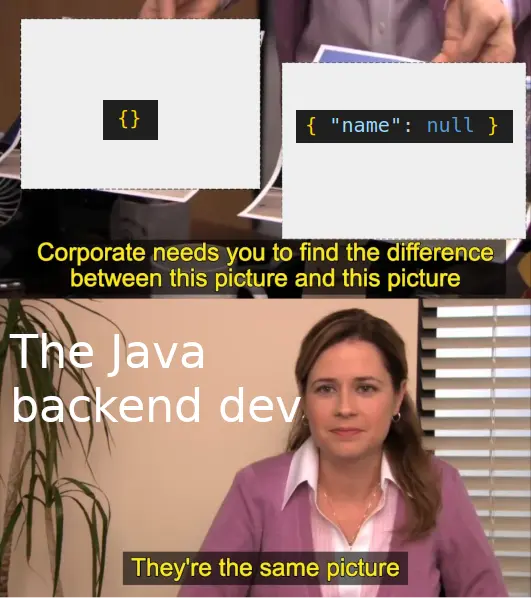this post was submitted on 30 Jun 2024
152 points (93.2% liked)
Programmer Humor
32896 readers
1467 users here now
Post funny things about programming here! (Or just rant about your favourite programming language.)
Rules:
- Posts must be relevant to programming, programmers, or computer science.
- No NSFW content.
- Jokes must be in good taste. No hate speech, bigotry, etc.
founded 5 years ago
MODERATORS
you are viewing a single comment's thread
view the rest of the comments
view the rest of the comments

If it's part of the Requirements that the frontend should handle "No results found" differently from "Not authorized", even if that's just by showing an icon, then ach list of stuff which might or not be authorized should have a flag signalling that.
(This is simply data analysis - if certain information is supposed to be shown to the user it should come from somewhere and hence the frontend must get it from somewhere, and the frontend code trying to "deduce it" from data it gets is generally prone to the kind of problem you just got because unless explicitly agreed and documented, sooner or later some deduction done by one team is not going to match what the other team is doing. Generally it's safer just to explicitly pass that info in a field for that purpose to avoid frontend-backend integration issues).
Authorization logic is almost always a responsibility of the backend (for various reasons, including proper security practices) and for the frontend it's generally irrelevant why it's authorized or not, unless you have to somehow display per-list the reason for a it being authorized or not, which would be a strange UI design IMHO - generally there's but a flag in the main part of the UI and a separate page/screen with detailed authorization information - if the user really wants to dig down into the "why" - which would be using different API call just to fill in that page/screen.
So if indeed it is required that the frontend knows if an empty result is due to "Not Authorized" rather than "No results found" (a not uncommon design, though generally a good UI design practice is to simply not even give the user access to listing things the user is not authorized to see rather than let the user chose them and then telling them they're not authorized to do it, as the latter design is more frustrating for users) that info should be an explicit entry in what comes from the backend.
The JSON is indeed different in both cases, but if handled correctly it shouldn't matter.
That said, IMHO, if all those 3 fields in your example should be present, the backend should be putting a list on all 3 fields even if for some the list is empty, rather than a null in some - it doesn't matter what the JSON is since even at the Java backend level, a List variable with a "null" is not the same as a List variable with a List of length 0 - null vs empty list is quite a common source of mistakes even within the code of just the one tier, though worse if it ends up in API data.
Who is wrong or right ultimately depends on the API design having marked those fields as mandatory or optional.